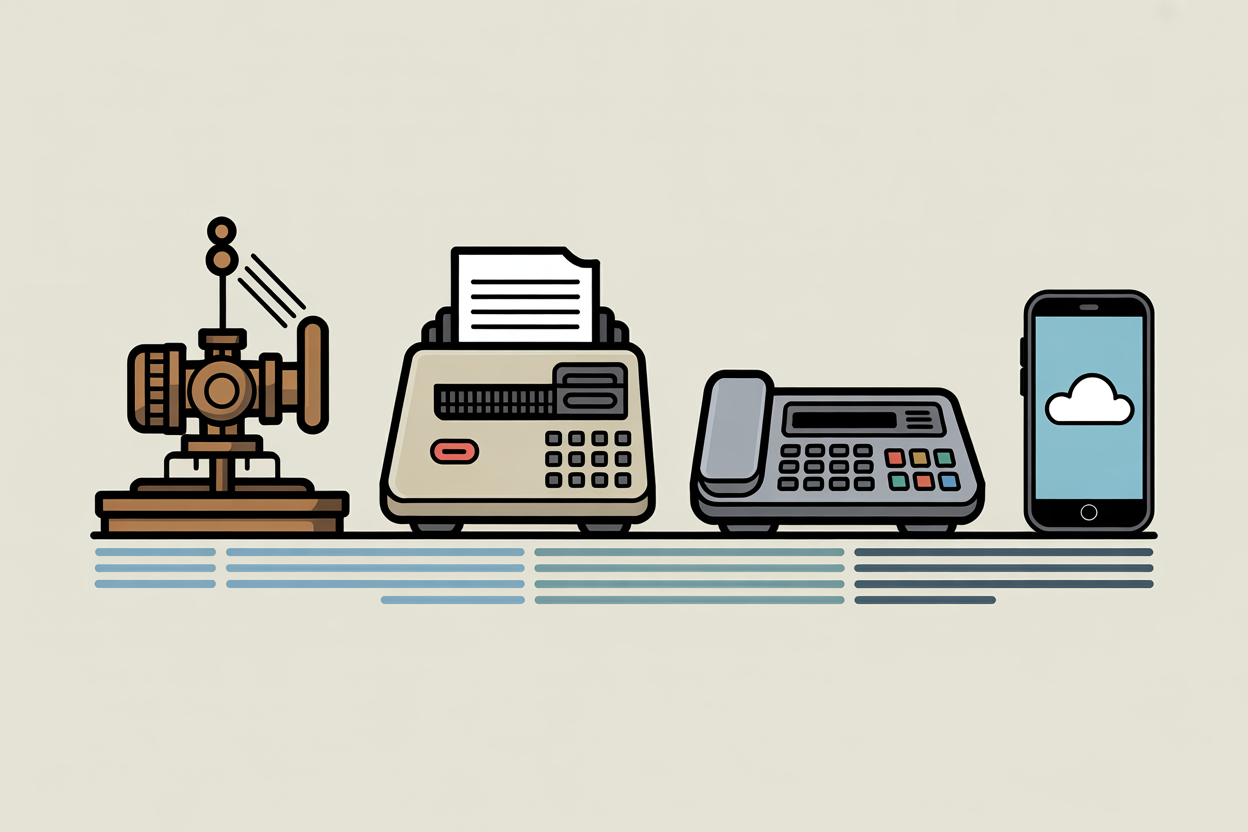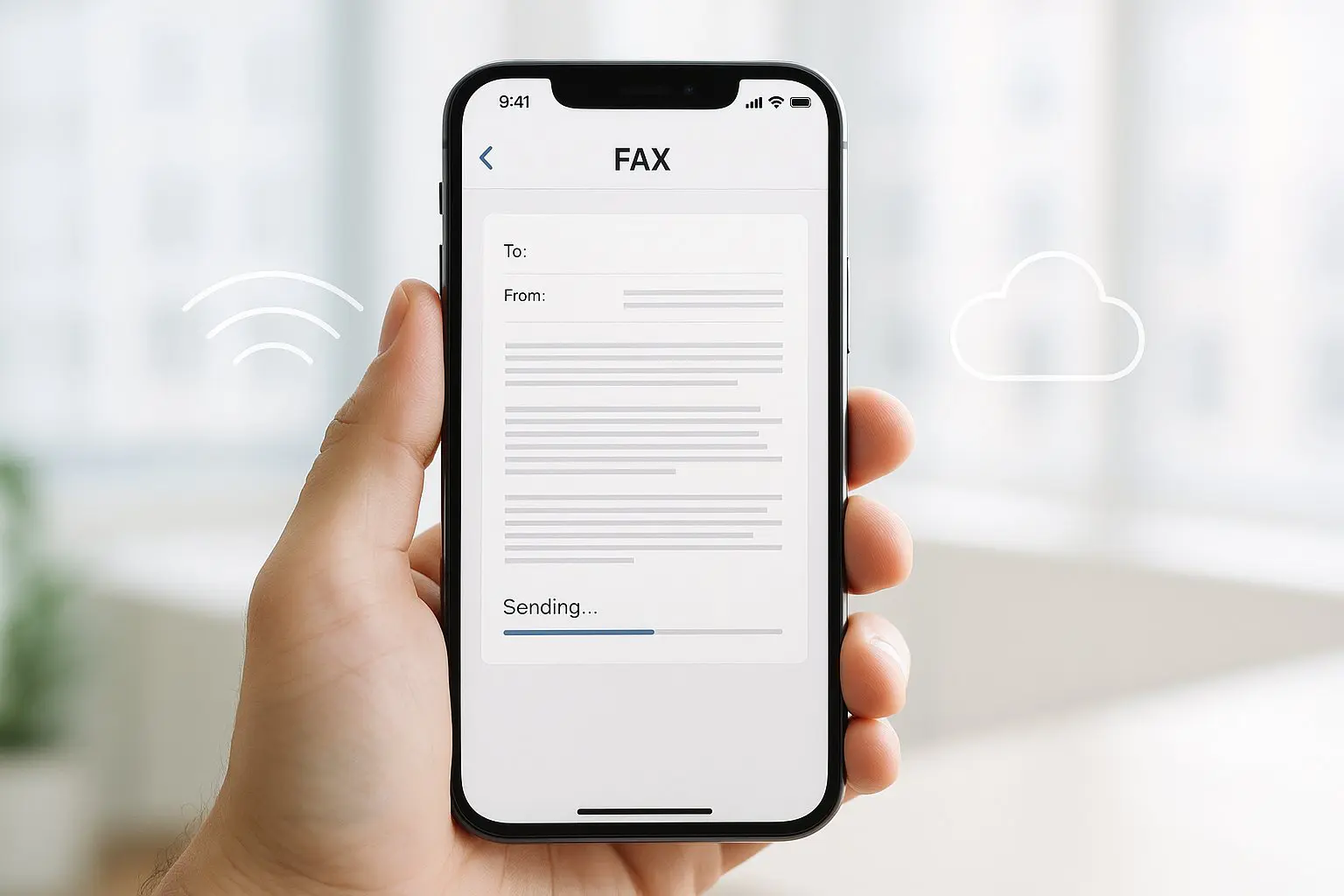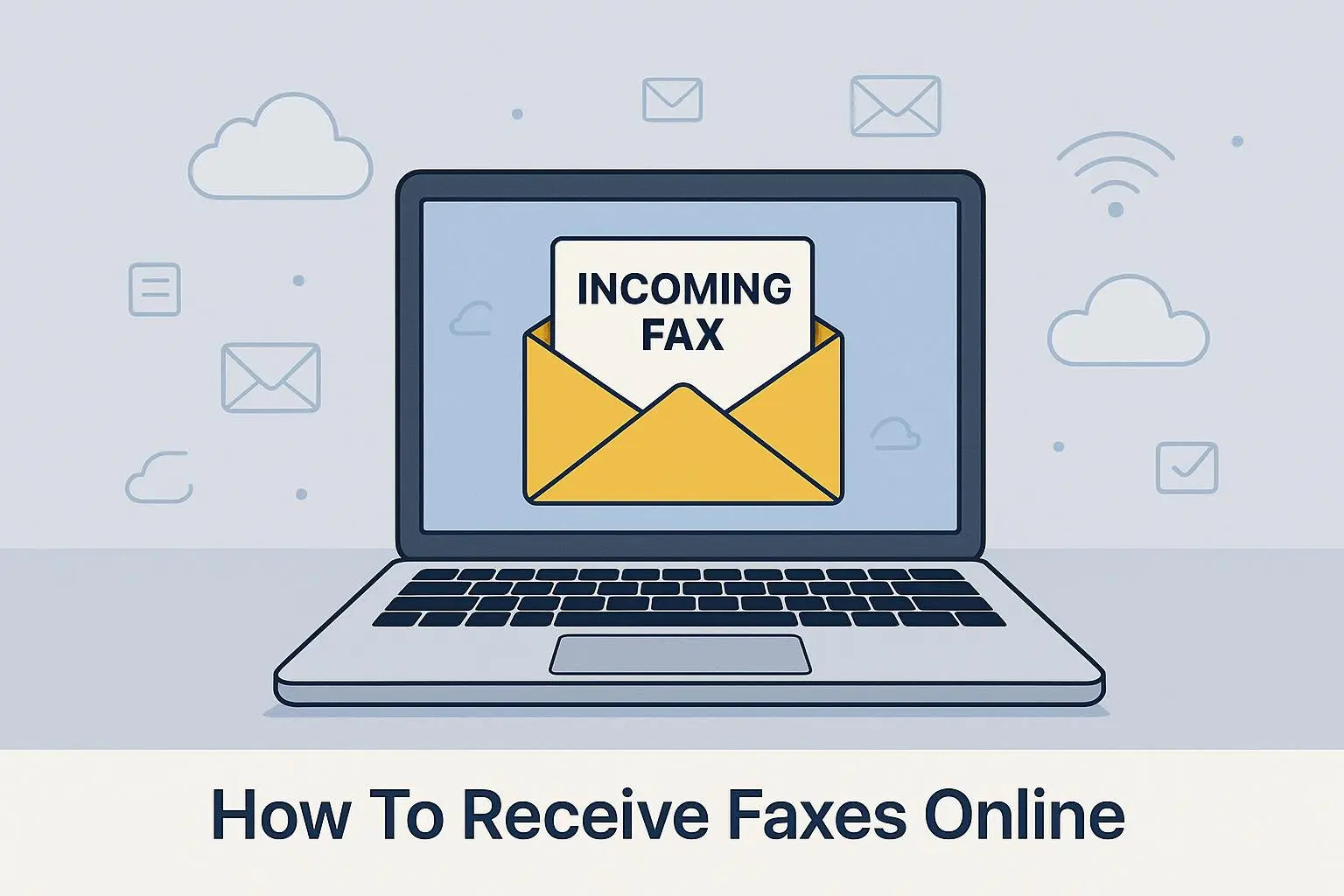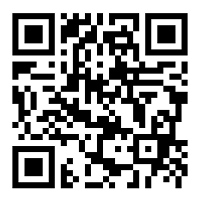When people call fax machines “old tech,” chances are they don’t actually know just how old. Nearly two centuries, if you believe it. But when you picture one, you probably imagine an intrusive piece of hardware, reams of paper, and (if you’re old enough) an obnoxious dial-up sound.
Yet even those office mainstays of decades past were “future tech” back in the 1840s when people first tried to send words or images over a wire. But eventually a scientific curiosity grew into a near-permanent fixture of global business (not to mention government and healthcare!).
It’s best not to think of the fax machine as just an invention. It’s more of an adaptation. It shapes itself according to the needs of the time. It responds. It moved from an electrochemical prototype to a phone-line connection. Now, it’s on the cloud. By the second half of the 20th century (ancient history for some of us), the fax machine was indispensable for sharing contracts, medical records, and legal documents faster and more securely than snail mail.
Then, the net. As with everything else, the internet changed how we share information. The big, bulky machines faded away, replaced by leaner, meaner (and less… physical) online faxing software. Still reliable. Still secure. But with mobility and efficiency to boot. It’s a natural successor to the old ways of doing business, and learning about the beginnings of the fax will show you why.
The Earliest Innovations (1843–1860s)
The Industrial Revolution of the early 19th century saw an explosion of experimentation, mechanical and electrical. Alexander Bain was a Scottish inventor who used a simple (by modern standards) pendulum and chemically-treated paper to “record” electrical signals passing through a wire. His 1843 patent of the “Electric Printing Telegraph” was the first major attempt at “facsimile transmission.” It was pretty crude and very unreliable, but it was a serviceable proof of concept that we could scan a communication at point A and reproduce it at point B.
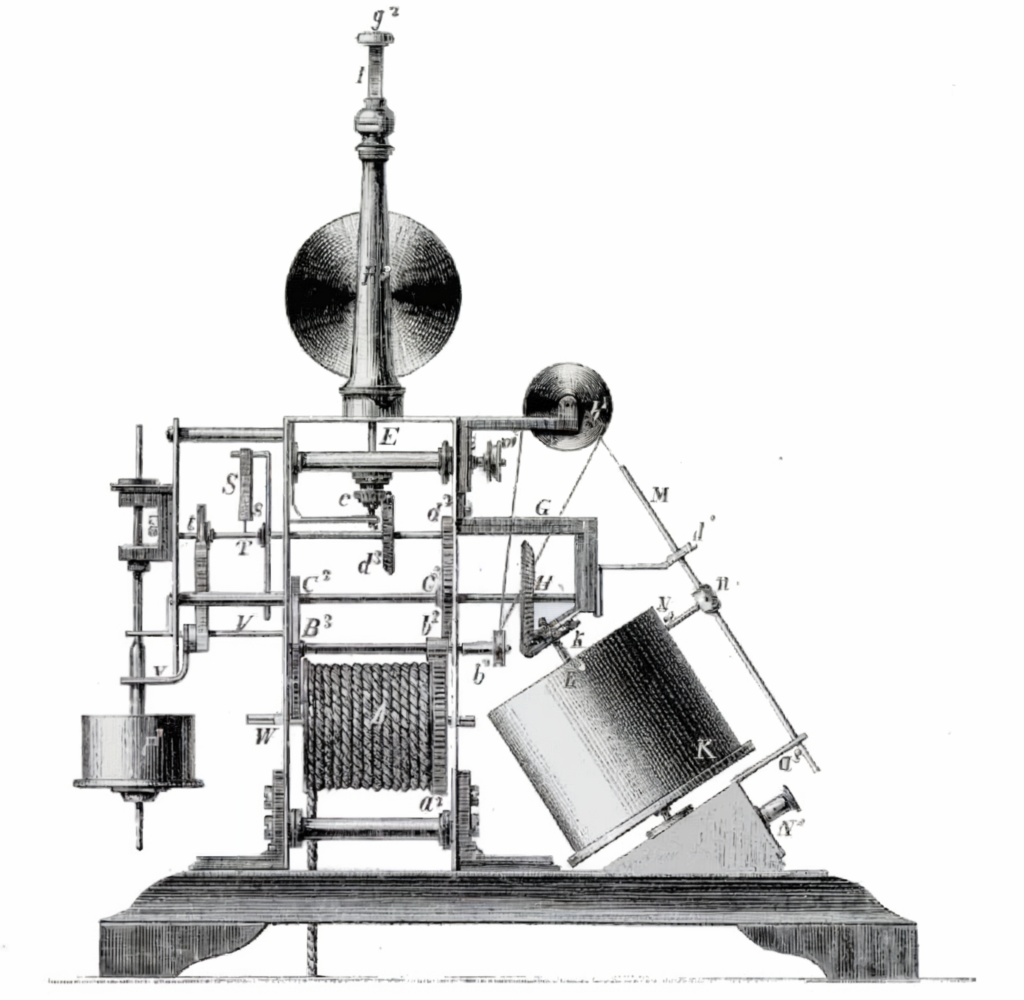
Less than a decade later, the Englishman Frederick Bakewell put a sheet of paper on a rotating cylinder attached to a stylus that traced the image to be transmitted. There was an identical, synchronized cylinder on the receiving end, and its stylus mirrored the movements of the transmitter. Blakewell’s device made quite a splash at tech exhibitions, but it was totally impractical – it was nearly impossible to keep the cylinders synchronized, so the images were almost always distorted. That said, it was an important step toward legit communication!
The first practical “facsimile,” or “fax” machine was Giovanni Caselli’s pantelegraph of the 1860s. It used a pendulum-based “scanner” that was much easier to synchronize with the receiver than Bain’s cylinder/stylus contraption. As such, it could reliably send writing and images across a wire. Starting in 1865, the pantelegraph used the telegraph lines between Paris and Lyon (over 250 miles) to transmit signatures, contracts, and (oddly) fine art.
Casselli had invented a viable way to replicate documents over great distances, and even Napoleon III took notice and supported further development. The rapid growth of telegraph infrastructure and (later) telephone lines pushed the pantelegraph out of widespread use over the next several decades. Nevertheless, it served government, businesses, and individuals during its run.
Between Bain, Bakewell, and Caselli, the fax went from pure speculation to functional (and practical) tech. Yes, all three operated under the scientific, industrial, and social constraints of their era, but they set down the fundamental principles that future fax machines would observe – scanning, synchronization, and reproduction. By the start of the 20th century, faxing was a reality, if a bit primitive.
Rise of Commercial Fax (1960s–1980s)
The fax really hit its stride in the mid-20th century. Even young office workers in 2025 would recognize them as machines with at least semi-modern electronics and a standardized interface. We might even persuade them that they’re an important piece of modern tech. After all, faxes aren’t a specialized project under Napoleon III anymore.
When Xerox introduced the Long Distance Xerography (LDX) system in 1964, it worked on regular phone lines, which made it the first commercially successful fax machine. Mechanically, it functioned differently from the old electrochemical or telegraph systems, too. The LDX had modern scanning technology and the same printing system as photocopiers. It was faster than the old machines, too. It could send and reproduce an entire page of paper in a lightning-fast… six minutes. Still a far cry from our standards, it was also bulky and expensive. Nevertheless, the LDX sent the fax mainstream.
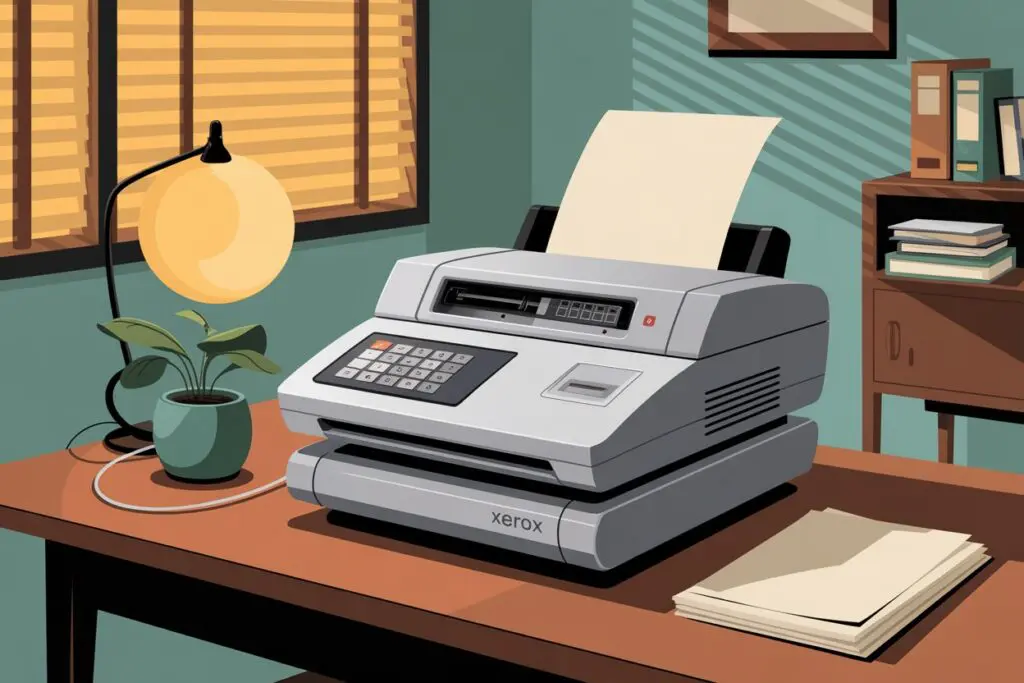
In ‘66, Xerox offered its streamlined machine for only $3,000! (For anyone keeping track, that’s over $29,000 in 2025 money.) The Magnafax Telecopier could fit (barely) on a desk and connect to a standard phone outlet. Xerox marketed the Magnafax to banks, law offices, and other places that needed cheap (relatively) and quick (also relatively) document exchange. The price and “convenience” might seem a little silly to us, but faxing was now a realistic option for medium-sized businesses and no longer just for governments or massive companies.
And the fax was now on the fast track, too. The next few decades saw improvements in speed and standards. For example, the International Telegraph and Telephone Consultative Committee (CCITT, later ITU-T) set up global protocols for compatibility between machines of different manufacturers. So, Group 1 and Group 2 standards in the late 60s ensured all analog machines could send a page in between 3-6 minutes. By the end of the 70s, Group 3 standards accounted for better digital compression and required transmission times under 1 minute per page. Machines that met these standards were also smaller, quieter, and more reliable than models from the 60s – and their popularity exploded.
Any 80s business that cared about secure documents had a fax. What had been futuristic tech a few decades before turned into the standard way to deliver contracts, purchase orders, press releases, and a ton of other documents across long distances. And there was no comparison between faxes and snail mail. Xerox’s first machines, those that followed, and international standards made the fax a core business component at the end of the 20th century.
Technological Evolution & Digital Fax (1990s–2000s)
Sometimes, technology improves – a newer, more efficient version of a thing (a fax machine, for example). But sometimes, there’s a revolution, and a completely new way of addressing people’s needs. The 80s and 90s saw quite a bit of both in telecommunications. Faxes were everywhere, but better computers and digital networking challenged what had become the normal way of sending information.
Localized, fax-specific progress came in the form of much faster transmission and smaller machines. Microprocessors and larger memory made faxes super compact, cheaper, and easy to use. And they were often integrated copiers, printers, and faxes all in one.
In addition, the Group 4 standards of the late 80s leveraged digital networking to send a page in a few seconds, instead of a minute. Group 4 never became a universal standard, but it showed how digital technology could interface with faxes to massively boost performance.
And we mentioned printers a moment ago. PCs became ubiquitous in the 90s, so having a single machine that could print a digital doc, copy a physical one, or send either of those to another location was huge (anyone remember the “print to fax” option from Windows 95?). And there were also dedicated fax modems that let a computer send a fax without an external machine. The fax was going digital.
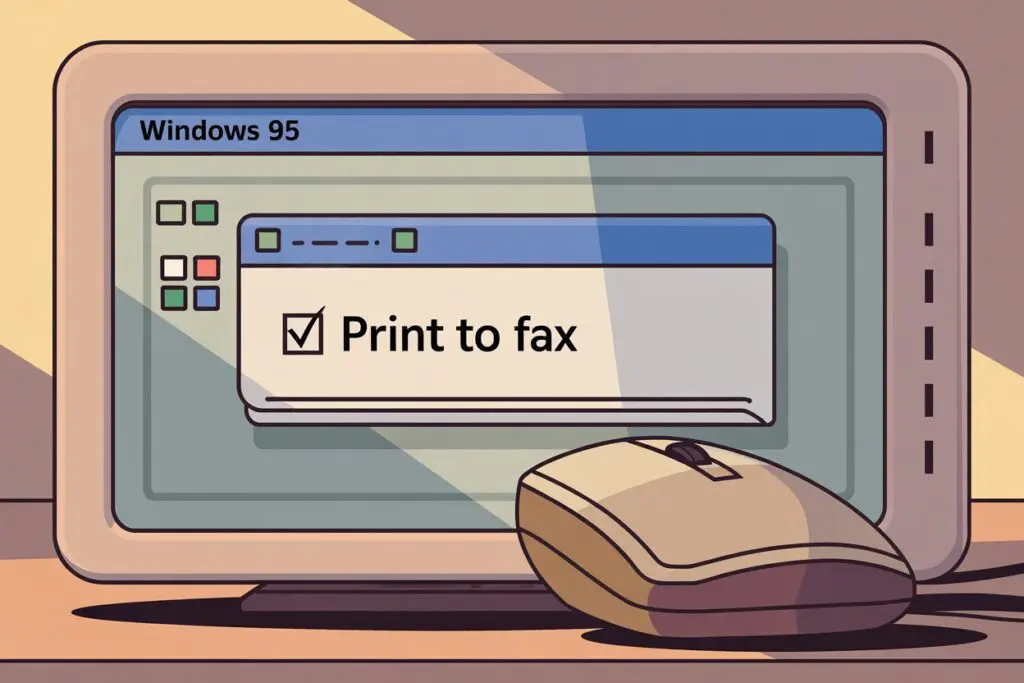
Enter, the internet. It’s when people started looking at fax machines as “Oh, that old thing.” They were still everywhere, but people were leaning more and more on email and messaging software for non-sensitive communication. But, as always, the fax adapted. Companies developed internet-based faxes that worked through email or a web portal. No more machine. No more paper or toner. No more phone line. You could upload and send through secure servers, and deliver to a fax machine or (if they had access) to the recipient’s online service.
The appeal was immediate. Online faxes were super fast, needed no consumables (toner was awful to deal with), no maintenance, and people could access them from any internet connection. Even within a single company with multiple offices, the online route cut costs and decluttered office space. For outside communications, the worldwide effect was even bigger.
But even with the web’s high speed, fax hardware persisted, and there were essentially two tracks. Traditional machines still serviced millions of businesses around the world, even as digital faxes redefined the medium. The interplay of old-fashioned and cutting-edge led directly to the mobile-friendly online faxes that people and businesses use now in 2025.
Modern Online Faxing: Benefits & Superiority (2010s–Present)
Cloud computing and mobile tech really changed things up in the 2010s, and faxing was certainly not immune. Yes, some offices still have dedicated fax machines, but online is the go-to. It’s got the same reliability for sensitive documents, but more convenience, higher security, and it’s way more efficient.
The convenience is maybe the most obvious improvement. Users can send and receive through email, web browsers, or dedicated apps. Basically, it’s as quick as slapping an attachment on an email. And the cloud means you can receive documents anywhere you have connectivity. It’s pretty hard to overstate how important this is for a mobile workforce – you don’t need to be in the office. Work from home, hybrid, or travel. None of them are impediments to faxing.
But security is also one of the mainstays of the fax’s utility. Healthcare, finance, legal services, and the government all rely on it because it’s a direct, point-to-point connection. Modern faxing apps build on this with high-tech encryption methods, multi-factor authentication, and cloud storage.
There’s also regulations to address. Many online faxes comply with the Health Insurance Portability and Accountability Act (HIPAA) and allow medical facilities and individuals to send sensitive health info securely. In fact, online faxes are even more secure than traditional ones, since there’s no printed pages to be left unattended. There are also digital audit trails, controls for access, and other digital fail-safes.
Looking back, the old machines burned through a lot of paper, toner, and energy. And the transmission time could be as high as six minutes for a single page. By modern standards, wasteful. But an online fax skips it all, and digital docs move in seconds, with no physical storage space, no consumables, and a smaller carbon footprint. It’s got all the same functionality, but modern faxing is incredibly efficient and sustainable.
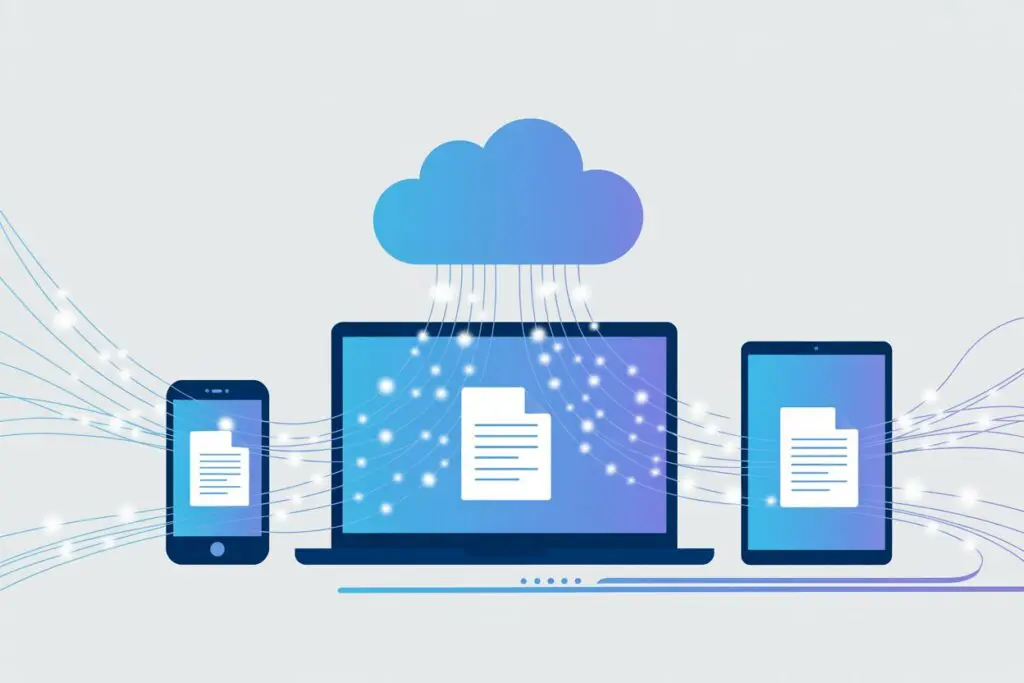
We think that, even with all the important functions that we might take a bit for granted, online faxing has another huge benefit – it’s a seamless fit with a business’s digital infrastructure. Most platforms connect with Google Drive, Dropbox, or OneDrive. And they can also interface with Office, Slack, and other productivity tools. To put it simply, online faxing is critical for any office that needs to send docs securely.
The Modern Evolution of the Fax
We said faxing was an adaptation. We hope you see it now, what with Bain’s first experiment and Caselli’s commercial pantelegraph. Then, with Xerox’s machines and the digital standards of the 80s, we can see how moving documents securely from point A to point B changed to fit the times. The machines of the 19th and 20th centuries basically defined secure document delivery.
But tech never stops evolving. Pendulums, styluses, cylinders, telegraph lines, dedicated modems, 3-in-1 print-scan-fax machines, and toner ruining a new suit have all taken a hike. Now, we’ve got cloud servers, mobile apps, and high-end encryption to help us out. But the core principles are still there – scanning, synchronization, and reproduction. And absent are the costs, inefficiencies, and security holes a mile wide.
Apps like Municorn Fax prove the point. It’s accessible like email, but has cloud platforms and compliant encryption to make it secure. It also has none of the downsides. Think of it not like a simple replacement for outdated machines. It’s more of a smart, sustainable solution for digital-first people and businesses.

